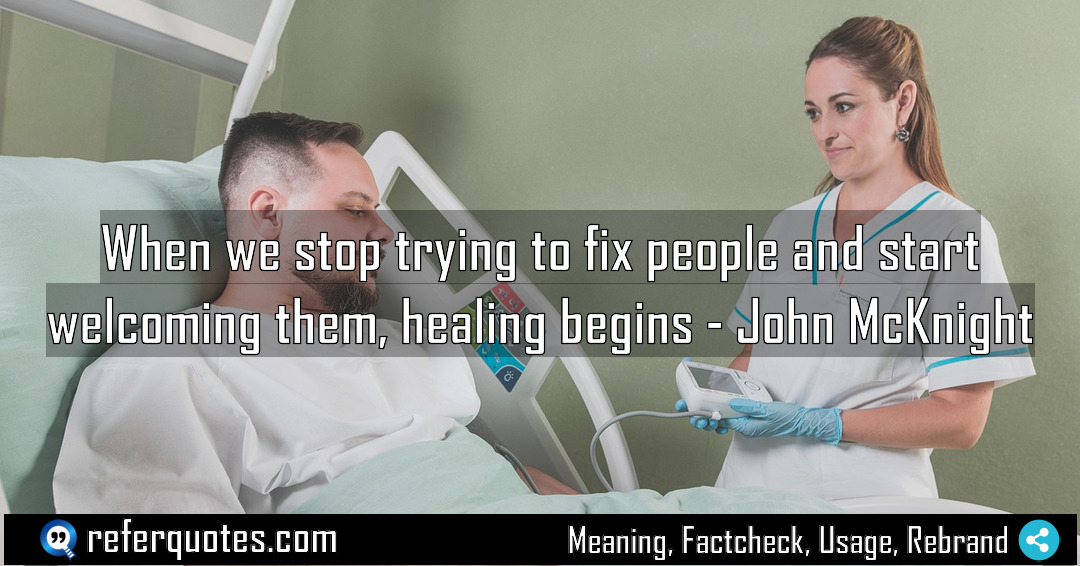When we stop trying to fix people, we unlock a profound shift. It’s about moving from a mindset of deficiency to one of genuine welcome and connection, where real healing can actually begin.
Share Image Quote:Table of Contents
Meaning
The core message is a radical one: stop seeing people as problems to be solved and start seeing them as assets to be embraced. Healing flows from that embrace, not from the “fix.”
Explanation
Look, for years in community work, we operated on this “deficit model.” We’d go into a neighborhood and see only what was broken—the lack, the needs, the problems. And our entire approach was, “Let’s fix you.” But here’s the thing I’ve learned the hard way: nobody wants to be your project. That dynamic is inherently disempowering. It sets up a hierarchy. It says, “I have what you need, and you are lacking.”
But when you welcome someone, you’re doing something entirely different. You’re inviting their gifts, their stories, their capabilities to the table. You’re creating a space of belonging. And in that space—this is the magic part—people often start to solve their own challenges. They find strength in connection. The “healing” isn’t something you do to them; it’s something that emerges from the relationship. It’s the difference between being a mechanic and being a host.
Quote Summary
| Context | Attributes |
|---|---|
| Original Language | English (3668) |
| Category | Health (243) |
| Topics | acceptance (73), healing (82) |
| Literary Style | plain (102), poetic (635) |
| Emotion / Mood | gentle (183), healing (4) |
| Overall Quote Score | 83 (302) |
Origin & Factcheck
This wisdom comes straight from John McKnight and Peter Block’s fantastic 2010 book, The Abundant Community: Awakening the Power of Families and Neighborhoods. You’ll sometimes see this sentiment floating around unattributed, but its home is firmly in their work on asset-based community development.
Attribution Summary
| Context | Attributes |
|---|---|
| Author | John McKnight (51) |
| Source Type | Book (4032) |
| Source/Book Name | The Abundant Community: Awakening the Power of Families and Neighborhoods (51) |
| Origin Timeperiod | 21st Century (1892) |
| Original Language | English (3668) |
| Authenticity | Verified (4032) |
Author Bio
John McKnight, Professor Emeritus at Northwestern University had spent decades of his life helping people rediscover the power of relationships. Being, co-founder of the ABCD Institute, his core idea revolves around communities that grows by identifying and connecting their assets. You’ll find the John McKnight book list here which are anchored by Building Communities from the Inside Out, The Careless Society, The Abundant Community, and The Connected Community.
| Official Website
Where is this quotation located?
| Quotation | When we stop trying to fix people and start welcoming them, healing begins |
| Book Details | Publication Year/Date: 2010; ISBN/Unique Identifier: 9781605095844; Last edition: 2012; Number of pages: 192. |
| Where is it? | Chapter: Welcome Over Fixing, Approximate page from 2012 edition: 228 |
